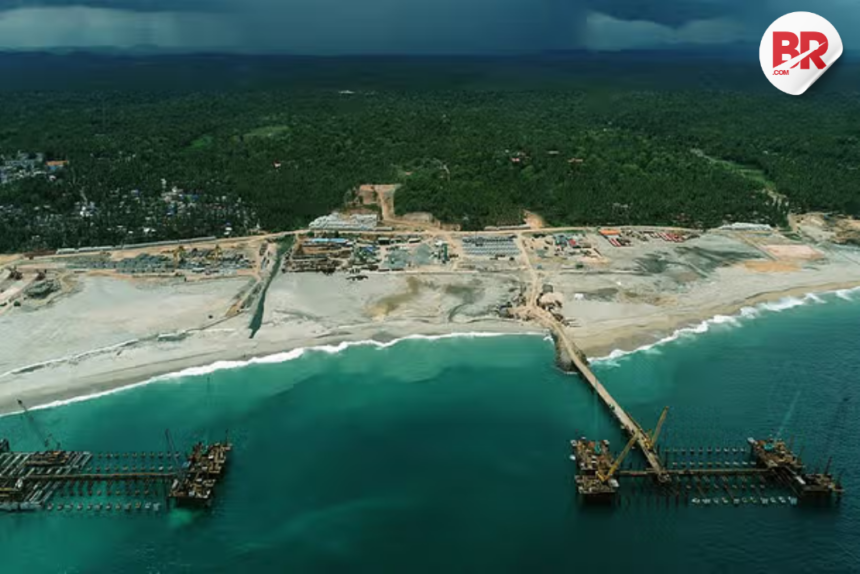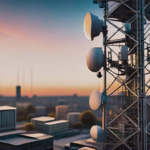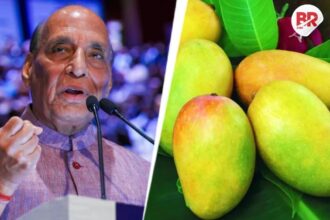
India just pulled off a big move in the global shipping game. With a natural draft of over 18 meters, Vizhinjam Port—inaugurated by Prime Minister Narendra Modi—is now one of the few ports in the world capable of welcoming the largest cargo ships on Earth.
Located in Kerala, it is being hailed as a strategic masterstroke in India’s ambition to control its own trade destiny.

So, what does that mean for the rest of us?
Right now, a massive portion of India’s cargo is routed through foreign ports like Colombo, Singapore, and Dubai. This adds time, cost, and dependency. Vizhinjam Port wants to change that.
It aims to make India a self-reliant transshipment hub—essentially turning Kerala into the country’s new front door for global trade.
A Deepwater Revolution
Let’s break it down. Most Indian ports can’t handle ultra-large vessels. The deeper the draft, the bigger the ship you can dock—and bigger ships mean lower shipping costs per container. Vizhinjam Port, with its natural depth and location just 10 nautical miles from international shipping lanes, is designed for this exact purpose.
Add to that state-of-the-art cranes, smart logistics, and better turnaround times, and you’ve got a port that’s finally thinking global. According to PIB India, the port is expected to handle nearly 1 million TEUs (twenty-foot equivalent units) annually in its initial phase.
At venue of #VizhinjamPort inauguration.
Looks like I’m the first one to reach😁, along with 1000s of @BJP4Keralam karyakartas – as we wait for our leader PM @narendramodi ji’s arrival 🙏🏻#Vizhinjam #infra4vikasitakeralam #VikasitaKeralam #PoliticsOfPerformance pic.twitter.com/4OPFdN4rzf
— Rajeev Chandrasekhar 🇮🇳 (@RajeevRC_X) May 2, 2025
For Kerala, a New Identity
Traditionally, Kerala’s economy has leaned on tourism, agriculture, and remittances. But Vizhinjam Port could change that narrative. As it scales, it is expected to generate thousands of direct and indirect jobs across logistics, warehousing, and transport.
Think of it this way: where once there were fishing villages, there could now be inland container depots and high-speed freight corridors. While this transformation won’t happen overnight, the long-term shift is massive—and it’s already underway.
But Let’s Not Romanticize It
This isn’t all smooth sailing. Environmentalists have raised alarms over coastal erosion. Locals have protested displacement. The challenge for both the Adani Group (which is developing the port) and the government is clear: economic growth cannot come at the cost of environmental or social stability.
Sustainability, community dialogue, and fair rehabilitation must be at the heart of this project. A port that divides its people won’t succeed—no matter how deep the draft.
Trivandrum Port Vizhinjam has achievements that no other port in the country can claim pic.twitter.com/vFfKK7vqE4
— Great Kerala (@GreatKerala1) May 1, 2025
Tied to a Bigger Vision
Vizhinjam Port isn’t a one-off. It aligns with India’s Sagarmala initiative, which aims to modernize port infrastructure and improve coastal connectivity. Imagine a future where Vizhinjam isn’t just a coastal endpoint—but a hub linked by inland waterways to central India.
That could mean cargo shipped from Europe to Kerala, then floated upriver all the way to Madhya Pradesh. It’s not just possible—it’s already on the roadmap.
Tomorrow marks a historic moment as Shri Narendra Modi ji, the Hon’ble Prime Minister of India, dedicates the Vizhinjam International Seaport to the nation. This landmark project – the largest-ever state investment in any port in the country, with two-thirds of the cost borne by… pic.twitter.com/kPk0PVIWpU
— Pinarayi Vijayan (@pinarayivijayan) May 1, 2025
Final Port of Call
The opening of Vizhinjam Port is more than a ribbon-cutting event—it’s a strategic pivot. One that could put India in control of its maritime destiny, reduce foreign dependency, and build a modern trade corridor starting from Kerala’s coast.
The punchline? For decades, India watched ships pass by. Now, it’s ready to dock them, direct them, and maybe even outpace the ports that once served it.
Also Read Why Elon Musk’s Satellite Internet Plan in India Has Everyone Nervous — Except Him












